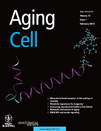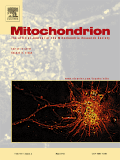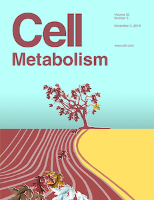
AGING CELL
Scope & Guideline
Innovating Solutions for Healthy Aging
Introduction
Aims and Scopes
- Cellular and Molecular Mechanisms of Aging:
Research that investigates the fundamental biological processes underlying aging at the cellular and molecular levels, including studies on cellular senescence, oxidative stress, and mitochondrial dysfunction. - Age-Related Diseases and Healthspan:
Studies that focus on the relationship between aging and various diseases, such as neurodegenerative disorders, cardiovascular diseases, and metabolic syndromes, aiming to understand how aging influences disease progression and healthspan. - Therapeutic Interventions and Aging:
Research exploring potential therapeutic strategies aimed at mitigating the effects of aging and promoting healthy longevity, including pharmacological interventions, dietary modifications, and lifestyle changes. - Genetics and Epigenetics of Aging:
Investigations into genetic and epigenetic factors that influence aging and longevity, including studies on genetic variations associated with age-related traits and epigenetic modifications. - Model Organisms in Aging Research:
Utilization of various model organisms, such as mice, worms, and primates, to study the biological mechanisms of aging and test potential interventions.
Trending and Emerging
- Cellular Senescence and the Senescence-Associated Secretory Phenotype (SASP):
Research on cellular senescence, particularly the SASP, is increasingly prominent, focusing on how senescent cells contribute to aging and age-related diseases through inflammatory and tissue remodeling processes. - Microbiome and Aging:
Emerging studies are exploring the relationship between the gut microbiome and aging, emphasizing how microbial composition and metabolites can influence healthspan and longevity. - Nutritional Interventions and Metabolism:
There is a growing emphasis on the impact of dietary factors and metabolic pathways on aging, with research investigating caloric restriction, specific nutrient supplementation, and dietary patterns that promote healthy aging. - Epigenetics and Aging:
The field is seeing an increase in studies focusing on epigenetic modifications and their role in aging, including how environmental factors and lifestyle choices can influence epigenetic aging. - Regenerative Medicine and Stem Cell Research:
Research related to the use of stem cells and regenerative therapies to combat age-related degeneration and improve tissue repair is gaining traction, reflecting a broader interest in rejuvenation strategies.
Declining or Waning
- Traditional Pharmacological Interventions:
Research on conventional pharmacological treatments for aging-related conditions appears to be waning, as there is a growing interest in exploring novel approaches and integrative therapies. - Single-Factor Studies in Aging:
The focus on studies that examine a single factor in aging, such as a specific protein or gene, is decreasing, with a shift towards more complex, multi-factorial approaches that consider the interplay of various biological systems. - Non-Mechanistic Observational Studies:
There is a decline in purely observational studies that do not delve into the mechanisms of aging, as the journal increasingly favors research that provides insights into underlying biological processes.
Similar Journals

Aging Medicine
Championing Open Access to Aging InsightsAging Medicine, published by Wiley, is a pivotal open-access journal that has been at the forefront of research dedicated to the aging population since its inception in 2018. With a focus on both geriatric care and gerontology, the journal serves as a crucial resource for researchers, healthcare professionals, and students interested in understanding the complexities of aging and the related medical challenges. Although it holds a Q3 quartile ranking in the fields of Aging and Geriatrics and Gerontology according to the 2023 metrics, the journal continues to effectively disseminate valuable research and insights, helping to bridge gaps in knowledge and practice. With an E-ISSN of 2475-0360, it offers an open-access model that ensures broader accessibility to its published content, thus promoting collaboration and innovation across disciplines. As the journal converges towards 2024, it remains committed to evolving with the dynamics of aging research, making it a significant platform for the exchange of ideas and advancements in this essential field.

Frontiers in Aging
Leading the Charge in Aging ResearchFrontiers in Aging is a leading academic journal published by FRONTIERS MEDIA SA, dedicated to advancing the understanding of the biological processes associated with aging. Established in 2020, this open-access journal aims to bridge the gap between various disciplines including genetics, molecular biology, and physiology, providing a multidisciplinary platform for researchers and clinicians alike. With a notable impact factor denoted by its Q2 quartile rankings in Aging, Genetics, and Molecular Biology, and a Q1 ranking in Physiology as of 2023, the journal is recognized for its contribution to the scientific community. Located in Lausanne, Switzerland, it is committed to promoting open discourse and publishing cutting-edge studies that address the complexities of aging and its implications for health and longevity. The journal’s editorial board, consisting of leading experts, ensures the rigorous peer-review process, maintaining high academic standards and fostering innovation in aging research.

EXPERIMENTAL CELL RESEARCH
Illuminating the Complexities of Cellular LifeEXPERIMENTAL CELL RESEARCH is a highly respected journal published by Elsevier Inc, specializing in the dynamic and ever-evolving field of Cell Biology. With an impact factor positioned in the Q2 quartile for 2023, it ranks at the 124th position out of 285 in the Scopus Ranks, indicating a solid reputation among peers in the domains of biochemistry, genetics, and molecular biology. Since its inception in 1950, the journal has contributed significantly to the dissemination of groundbreaking research, providing a platform for studies that explore the nuances of cellular mechanisms, processes, and experimental methodologies. Although the journal currently does not offer open access, its commitment to high-quality, peer-reviewed research continues to attract submissions from leading scientists and scholars across the globe. Researchers, professionals, and students alike will find this journal an invaluable resource for keeping abreast of current developments and innovative breakthroughs in cellular science.

Nature Aging
Elevating Understanding of Aging DynamicsNature Aging, published by SPRINGERNATURE in Germany, stands as a premier journal dedicated to advancing the field of aging research. With high-ranking performance indicators, including a Q1 classification in Aging, Geriatrics and Gerontology, and Neuroscience (miscellaneous), this journal emphasizes the interdisciplinary nature of aging studies. Its Scopus rankings highlight its impact, achieving remarkable positions such as #1 in Neuroscience and #2 in both Geriatrics and Biochemistry for aging-related research. Although currently not open access, Nature Aging provides a wealth of cutting-edge research and critical reviews that aid researchers and practitioners in understanding the complexities of aging mechanisms and their implications. As the field continues to evolve from 2021 through 2024, this journal not only facilitates the dissemination of knowledge but also fosters innovative discussions that propel the science of aging forward. Join the vibrant community of scholars and professionals dedicated to solving the challenges associated with aging by engaging with the content published in Nature Aging.

Cell Stress
Pioneering Insights into Cellular ResilienceCell Stress is a prestigious, peer-reviewed open access journal dedicated to advancing research in the fields of biochemistry, genetics, molecular biology, cancer research, and physiology. Published by SHARED SCIENCE PUBLISHERS OG in Austria, this journal has rapidly established itself since its inception in 2017, achieving Q1 status in multiple categories, indicative of its high impact and quality. With an impressive Scopus ranking—holding a top percentile position in its respective fields—Cell Stress aims to foster interdisciplinary collaboration and disseminate cutting-edge findings that enhance our understanding of cellular stress mechanisms and their implications in health and disease. The journal's commitment to open access since its launch ensures that critical research is accessible to a global audience, thereby facilitating the exchange of knowledge among researchers, professionals, and students alike. Address your submissions or inquiries to AM BLUMENHAG 25-4, Graz 8010, Austria, and contribute to this dynamic platform that is shaping the future of molecular medicine.

GeroScience
Catalyzing Collaboration in Aging StudiesGeroScience, published by Springer, is an esteemed open-access journal that focuses on the multidisciplinary field of aging research. Since its inception in 2017, the journal has quickly established itself as a leader in its field, achieving impressive Q1 quartile rankings across various categories, including Aging, Cardiology and Cardiovascular Medicine, Geriatrics and Gerontology, and Complementary and Alternative Medicine, as per 2023 evaluations. With a significant impact factor that underscores its influence and reach in academia, GeroScience aims to disseminate high-quality research that addresses the complex challenges and advancements related to aging. Its accessible publication format fosters greater dissemination of knowledge and encourages collaboration among researchers, practitioners, and students eager to contribute to the growing body of work on age-related health issues. As it continues to thrive, GeroScience remains a pivotal resource for anyone looking to stay at the forefront of aging research.

MITOCHONDRION
Unraveling the Mysteries of Mitochondrial ScienceMITOCHONDRION is a distinguished peer-reviewed journal published by Elsevier Science Ltd, focusing on the intricate roles of mitochondria in various biological processes. With an ISSN of 1567-7249 and an E-ISSN of 1872-8278, this journal has carved out a significant niche within the fields of Cell Biology, Molecular Biology, and Molecular Medicine, as evidenced by its Q2 ranking in these categories for 2023. The journal emphasizes the latest research on mitochondrial biogenesis, function, and dynamics, making it a pivotal resource for professionals, researchers, and students engaged in cutting-edge mitochondrial studies. With a robust Scopus ranking, placing it in the top percentiles of its categories, MITOCHONDRION not only advances scientific understanding but also fosters collaboration and innovation within the research community. Though it does not offer Open Access, the journal's comprehensive articles and reviews remain indispensable for those striving to unravel the mysteries of mitochondrial biology. For research spanning from its inception in 2001 through its ongoing commitment to 2024, MITOCHONDRION continues to be a vital platform for disseminating high-quality, impactful research in the realm of mitochondrial science.

CELL
Transforming the landscape of biochemistry and molecular biology.CELL is a premier academic journal in the field of Biochemistry, Genetics, and Molecular Biology, published by CELL PRESS. Founded in 1974, this esteemed journal has steadfastly contributed to advancing our understanding of cellular processes and organisms, making it integral for researchers and practitioners alike. With an impressive impact factor that places it in the Q1 category of its field, CELL ranks #1 out of 221 in general biochemistry and genetics, achieving a remarkable 99th percentile in Scopus rankings. Though it is not currently an open-access publication, the journal regularly disseminates high-quality research that impacts the scientific community significantly. Researchers, students, and professionals seeking to stay at the forefront of innovative discoveries and methodologies in molecular biology will find CELL an invaluable resource through its comprehensive articles and reviews.

GERONTOLOGY
Transforming Understanding of Geriatric HealthGERONTOLOGY, published by KARGER in Switzerland, is a prominent journal dedicated to the study and understanding of aging, with a keen focus on the interdisciplinary aspects of geriatric medicine and gerontology. Established in 1957, it has provided a platform for cutting-edge research that covers a wide range of topics including, but not limited to, the biological, psychological, and sociological aspects of aging. With an impressive ranking that places it in the Q3 category for Aging and Q2 for Geriatrics and Gerontology as of 2023, the journal continues to attract high-quality submissions from researchers worldwide, evidenced by its Scopus rankings, which position it favorably within relevant fields. While it operates under a subscription model, the journal remains committed to advancing knowledge that informs practice and policy within an aging society. By fostering innovative studies and discussions, GERONTOLOGY serves as an essential resource for researchers, health professionals, and students alike, dedicated to the care and understanding of older adults.

Cell Metabolism
Exploring the frontiers of cellular energy.Cell Metabolism is an esteemed journal published by CELL PRESS, dedicated to advancing the understanding of metabolic processes within cell biology, molecular biology, and physiology. With an impactful 2023 ranking placing it at Q1 in multiple categories and earning a distinguished position in the top percentiles of its respective fields, this journal serves as an essential resource for researchers, professionals, and students who are investigating the dynamic roles of metabolism in health and disease. Its rigorous peer-review process ensures high-quality publications that reflect the latest advancements in metabolic research. Since its inception in 2005, Cell Metabolism has become a pivotal platform for disseminating critical findings that not only expand scientific knowledge but also foster innovative approaches to tackle metabolic disorders. By prioritizing accessibility and scholarly excellence without the Open Access model, it remains a premier source for cutting-edge research insights.